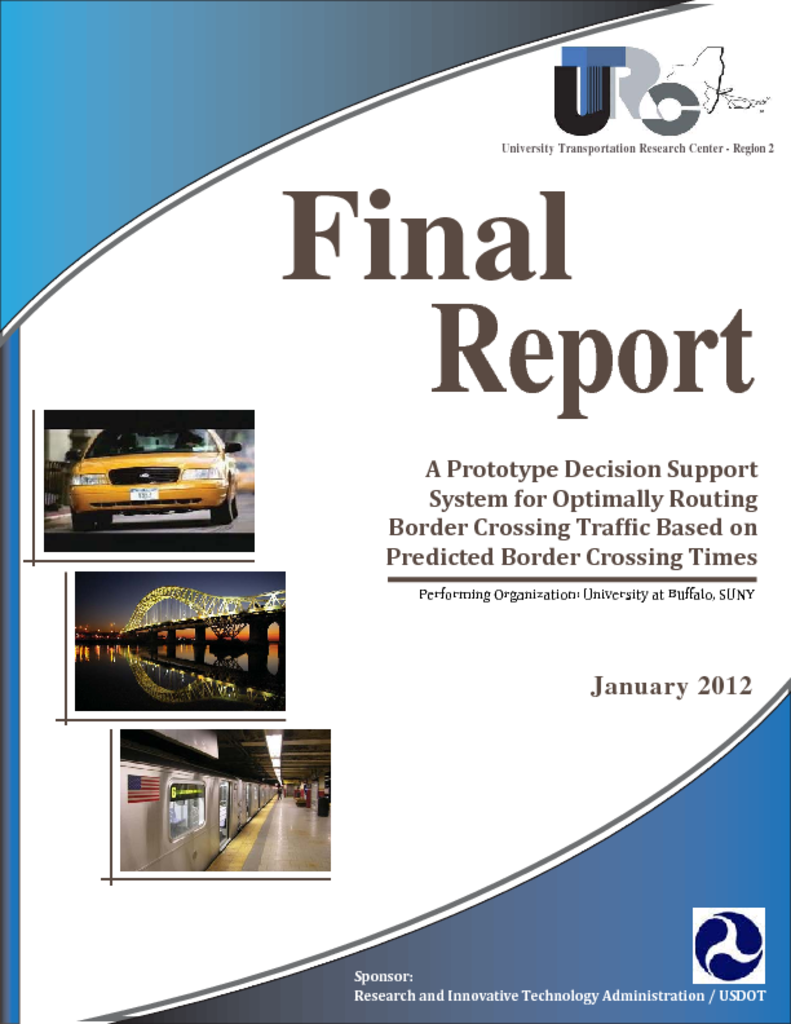The economic vitality of the “Golden Horseshoe”, a densely populated and industrialized region which encompasses Southern Ontario, Canada and parts of New York State including the Buffalo-Niagara Region, is heavily dependent upon the ability to move goods freely and efficiently across the Canadian-US border. This highlights the critical importance of the Niagara Frontier International border crossing, one of North America’s busiest portals for travel and trade. This study had two primary objectives. The first objective was to develop a forecasting method for the on-line, short-term prediction of hourly traffic volumes at the Niagara Frontier border crossings. The second objective of the study was to develop queueing models which would use the predicted traffic volume to estimate the future border delay. As a case study, the project considers the Peace Bridge border crossing, which is one of the busiest Niagara Frontier border crossings, serving over 4.76 million cars annually.
For the short-term prediction of hourly volumes at the Peace Bridge, a novel method was developed, which combines forecasts from traditional time series analysis, specifically the Seasonal Autoregressive Integrated Moving Average (SARIMA) model, with forecasts made by Support Vector Regression (SVR). The two models’ forecasts are combined using: (1) a simple fixed weight procedure; and (2) the fuzzy adaptive variable weight method, based on the Fresh Degree Function. Based on an analysis of the diurnal distribution of traffic volumes, six separate classes are defined and individual models are developed for weekdays (Monday - Thursday), Fridays, Saturdays, Sundays, holidays and game days.
The evaluation results for that part of the study appear to confirm the hypothesis that, while the SARIMA model does a good job capturing the linear characteristics of the data (e.g., seasonality and trend), SVR appears to outperform SARIMA in modeling the data’s nonlinear aspects. The study also shows that combining forecasts from the two models, especially using the fuzzy adaptive variable weight method, yields excellent prediction performance, with values for the Mean Absolute Percent Error in the predictions of only about 7%. For estimating future border delay, the study built and solved an inverse M/M/c queueing model, where it was assumed that arrivals followed a Poisson distribution, service times followed an exponential distribution, and that the system had c service stations open. An inverse model was needed because the hourly volumes predicted from the first part of the study were outgoing volumes (i.e. volumes leaving the border customs and inspection stations), and not incoming volumes. The report includes an example to demonstrate how the inverse queueing model may be solved to estimate the expected average delay.




